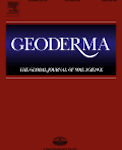 Elevated greenhouse gas (GHG) emissions, particularly of methane (CH4) from flooded rice production systems contribute to global warming. Different crop management strategies, such as drainage of paddy soils and climate-smart residue management, are essential in order to mitigate GHG emissions from flooded rice systems, but they often conflict with practical management preferences.
Elevated greenhouse gas (GHG) emissions, particularly of methane (CH4) from flooded rice production systems contribute to global warming. Different crop management strategies, such as drainage of paddy soils and climate-smart residue management, are essential in order to mitigate GHG emissions from flooded rice systems, but they often conflict with practical management preferences.
The aim of this study was to assess the potential of early-season drainage for mitigating CH4and N2O emissions from soils with and without added organic amendments in relation to native soil organic carbon (SOC). Rice plants were grown in pots under controlled conditions in a growth chamber with different treatments in a 2 × 2 × 3 factorial design. The treatments included an arable soil with two different carbon levels: 1.4% (low carbon, [L]) and 2.2% (high carbon [H]); two water regimes: midseason drainage (M) and early plus midseason drainage (EM); and three nutrient treatments: one inorganic control (nitrogen fertiliser only [N]), and two organic: maize straw + N fertiliser (S) and maize compost + N fertiliser (C). An equal amount of mineral N fertiliser was applied in all treatments. Straw and compost were applied to the soils on the basis of an equivalent amount of C added in each organic treatment.
The results revealed rapid mineralization of organic C in the double-drained system, resulting in lower total CH4 emissions in treatments under early plus midseason drainage compared to those under midseason drainage only. Total CH4 emissions were reduced by 89% and 92% in the S + EM treatments in low C soils and high C soils respectively, as compared to S + M. The drainage effects on CH4 emissions from compost amendments were only significant in the low C soil, with a 61% reduction in EM compared to M drainage. N2O emissions from non-organic treatments in EM were 87% higher than in M under low C soils. The concentrations of dissolved organic carbon (DOC) were higher in organic treatments and decreased by the end of growth period. This experiment demonstrated an interaction between water and straw management to achieve both sustainable soil quality and low-emission rice production








